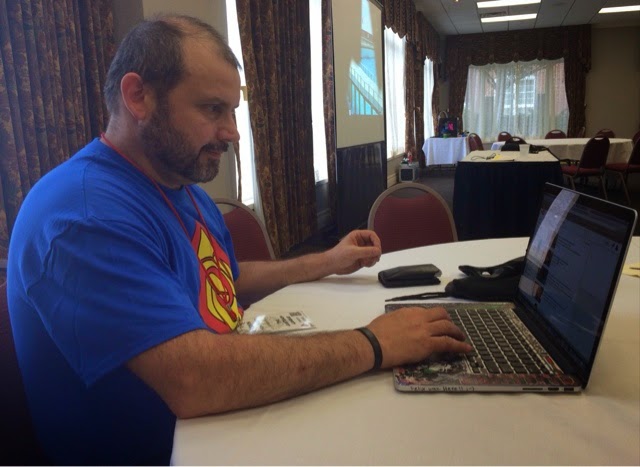Twitter chats are planned and scheduled. They start at a certain time, and they usually last one hour. During that one hour, there is a moderator (or sometimes a team of moderators) who poses questions to the group to start conversations. Participants then share their ideas and create a discussion around the question. After allowing time for discussion, the moderator moves on and poses another question. Most Twitter chats follow the Q1/A1 format. That means the moderator poses his first question by starting with Q1. His/her tweet might look like this: "Q1: How do you plan to make this year better than last year? #DCHSchat." To respond to this question you would start your tweet with A1. Your response might look like this: "A1: I threw out all my worksheets, and we're doing ALL hands on, engaging learning! #DCHSchat." This format allows participants to know when a new question is being asked, and it also lets people know which question you are responding to. Notice that both tweets included the hashtag #DCHSchat. This is super important. If the hashtag is not included in the question or your response, no one will ever see the tweets, and it will be like you are not participating at all.
There are dozens (maybe hundreds) of Twitter chats about education. Here is a list of dates and times of some Twitter chats about education: http://goo.gl/RG1zm6. I would encourage you to find one that interests you, and "attend" the chat!
When I first started getting involved in Twitter chats, I was a lurker. That means I would follow the chat hashtag and I would read everyone's tweets, but I would never contribute to the conversation. I was afraid I would say something stupid. Lurking is okay. You can learn a decent amount by lurking. However, my learning increased exponentially once I started adding to the conversation! Now, I love jumping into Twitter chats; it's how I push myself and grow. However, there are times today when I still lurk. Sometimes there's a great Twitter chat during my son's bath time, and I can't engage in the conversation, but when I get a chance I peek in on the conversation to see what teachers are talking about. You have to do what ever is comfortable for you...then push a little further past that comfort zone. That's how we get better!
Now that you know what a Twitter chat is and how they work, I would like to invite you to join our DCHS Twitter chat. Here's how to join the conversation. On Monday August 18th at 7:00 pm, log on to your Twitter account. In the top right hand corner, there is a search box. In that search box, type #DCHSchat. It will give you the option to view the "Top Tweets" or "All Tweets." You'll want to see everyone's tweets, so click on "All Tweets." You'll start seeing questions and responses. Then, start responding with your own tweets (remember to use the #DCHSchat hashtag)! That's it!! I can't wait to "see" you there!!



































